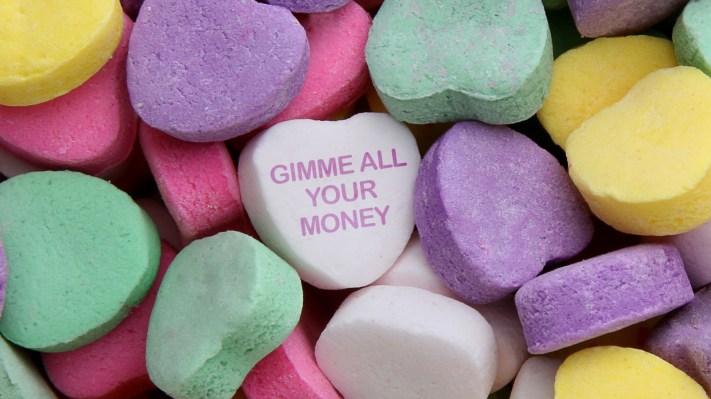It may be Valentine’s Day here in the U.S., but the dating app market isn’t looking as promising as it used to. According to a new analysis by app intelligence provider data.ai, global downloads of dating apps saw only tepid growth year-over-year as of this January — a slight increase of just 1.9% to reach 128 million installs, compared with the 29% increase seen during the same time in the prior year. In the U.S., growth has also slowed, with a 2.38% year-over-year increase as of January 2024, reaching roughly 12.7 million installs, down from the nearly 16% growth seen in January 2023.
While data.ai likes to paint any growth as a positive sign for the industry, there are other signals that the market is losing steam.

Image Credits: data.ai
Dating app giant Match Group, which operates Match, Tinder, Hinge, OkCupid, and others, reported its total number of paying customers declined by 5% year-over-year as of its fourth-quarter earnings report in January. In the prior quarter, the company had reported a 6% decline in customers paying for its flagship app, Tinder, which sent the stock tumbling.
Tinder’s paying customer growth also slowed again last quarter, dropping 8% year-over-year to reach 10 million payers, the company said in its shareholder letter.
Though Match Group still beat estimates on fourth-quarter earnings and revenue — the latter up 10% year-over-year to $866.23 million — it’s become increasingly clear that’s because the company has learned how to squeeze more dollars out of a shrinking paying user base. Case in point: Tinder launched a ridiculously priced $500 per month subscription called Tinder Select last fall, which promised to match subscribers with the “most sought after” profiles — an idea it picked up from its 2022 acquisition of high-end dating app The League.
In the U.S. market, one of the largest for dating apps, only three in 10 adults reported ever using a dating site or app, Pew Research reported last year. That figure remains the same as in 2019, the firm pointed out.
Meanwhile, although one in 10 U.S. adults said they met their partner on a dating app or website, dating apps’ broader success on that front is questionable.
A recent analysis of U.S. Census Bureau data found that a record number of 40-year-olds (one-quarter) have never been married, up from just 6% in 1980. Arguably, this reflects other factors — including the acceptance of unmarried partners living together and the inclusion of same-sex couples into marriage data. Still, given that 44% of U.S. dating app users said they turned to dating apps to find a long-term partner, as opposed to wanting more casual relationships, it’s not clear that today’s apps have been able to deliver.
In addition, Tinder’s hold on the U.S. dating app market appears to be waning ever so slightly, data.ai’s new report shows. As of last month, it had the largest market share of any other dating app at 29.3%, but this is down from 29.8% a year ago.

Image Credits: data.ai
To date, Tinder has seen a total of 530 million downloads, the company shares on its website, but Match also admitted in Q4 that both Tinder’s U.S. and global daily new users had declined by the mid-single digits year-over-year, in addition to the decline in its paying customers.
Bumble’s share, meanwhile, shrunk from 17.6% to 14.3 % year-over-year, data.ai found, to come in at number two.
The “Other” category of dating apps, which includes the smaller companies and startups experimenting with new models, grew from a 27.4% market share in January 2023 to 29.2% in January 2024. This seems to indicate that among dating app users, there’s a growing desire for something new.
Things could still turn around, of course. Match said it will now look to AI to improve the dating app experience, including in areas like its photo picker, matching capabilities, and post-match guidance, by augmenting features like conversation starters and nudges with AI.
This follows on news that an increasing number of people are turning to AI tools like ChatGPT to help them with their dating app chats. An AI dating tool Rizz went viral and has seen downloads rise in the months following its Washington Post write-up. According to data from app intelligence provider Appfigures, Rizz has seen north of 2.24 million downloads over the past year, for example.
Whether AI can send more people back to dating apps, of course, remains to be seen, given that it will also likely inspire more AI-powered romance scams and other malicious activity, security firm McAfee recently warned.
All this doesn’t mean the market isn’t ripe for investment, however. In addition to the changes driven by AI, Match proves that dating apps can still deliver big dollars when properly monetized. Data.ai noted that dating apps generated a record $505 million in January 2024, even as year-over-year revenue growth slowed to 8% from 17% the year prior.
